I sent Kirk Dietrich a message today asking if he was working on anything new. He said no, that he was just tying some deep sinking flies that he had developed years ago to catch redfish and speckled trout when it got cold outside. He said he called the pattern Cyclops and it is able to withstand catching about 75 redfish. So basically I replied with, “Wow, tell me more about this Cyclops!” So Kirk, being the nice guy that he is, sent me over several photos, with tying instructions and more information.

Material List:
1. Mustad 32786D, Eagle Claw 413 or your favorite 60 degree angled jig hook #4 – #3/0
(note about hook: the pictures below are of the original version when Kirk used a regular 34007 hook. He has long since been using a 60 degree jig hook which he confirms is much more effective in keeping the fly oriented properly as well as in hooking the fish. The black and red one above is the only one pictured with the jig hook.)
2. “Plus” type thread, or equiv.
3. 1/8” wide strip lead wire or Large bead
4. Split bead Optic Eye unless using large bead
5. Kinky or Slinky Fibre for the toughest tail or your favorite material such as marabou, rabbit, hackle tips, etc.
6. Flash material
7. Estaz, A.k.a. Cactus Chenille or a loop dubbed wool or synthetic hair dubbing brush trimmed to shape after palmering
8. Crystal antron chenille
9. Hard nylon
Sources for materials: Cascade Crest Tools, Jann’s Netcraft and your favorite fly shop.
1. Cut a piece of lead wire up to 1 ¼” long, shorter if you want less weight but no more because the Optic Eye won’t fit over the finished ball. For a shallow water version, omit the lead and go to step 2. Wrap lead on hook shank by wrapping onto itself like a cinnamon roll. If using a large bead head bead, slip it on hook and go to step 3.
2. Put the split hollow Optic Eye over the lead and squeeze closed.
3. Tie in Kinky Fibre tail at bend of hook, add flash.
4. Tie in Estaz or a dubbing brush or a dubbing loop and then Chenille.
5. Take thread forward and tie in a “V” type weedguard behind the bead head.
6. Wrap chenille forward in close tight wraps and tie off at weedguard.
7. Spiral wrap Estaz through chenille and tie off at weedguard, whip finish. or your dubbed body material.
8. Trim the spiky Estaz fibers off of the body opposite the hook point to expose the chenille (this is the side of the fly that will be the bottom when the fly rides hook point up). Apply a generous amount of thin CA glue to the exposed chenille. This is what makes it bullet proof.
I developed the Cyclops in the winter of 1999 for Capt. Mark Brockhoeft of Big Red Guides at his request for a deep water fly that was more durable and better sinking than many of the popular bead chain and dumbbell weighted type flies. While those flies caught fish, he complained that he was only able to catch a couple dozen fish before they fell apart or the eyes started twisting on him or to go deep he had to use one so large it was a chore for his clients to cast. Even when superglued, the barbell eyes would start to twist and take the wing around the hook shank with it. Before you say a couple dozen fish is plenty on one fly, you’ve got to realize it’s common for Capt Mark’s clients to catch 50, 75, and sometimes 150 redfish in a day during the winter.
I tried beads used for bead headed nymphs, lead split shot, but wasn’t ever satisfied. It was then I found some split beads that a friend of mine Ted Cabali had given me years prior. He is forever tinkering with different materials and is a master at it and is always eager to share what he discovers with me. I didn’t use them at the time and stashed them for future creative inspiration.
These split beads, I knew could be the answer but I needed to find a good way to weight them and I would need more of the split beads. After a frustrating search, I finally found what I was looking for at Cascade Crest Tools. By putting the maximum amount of the strip lead around the hookshank to fill the hollow bead, the fly would get to the winter fish in the shallow lakes and bays (only four to ten feet deep) very quickly. When the lead was left out, they were light enough to use in the deeper ponds on the early spring fish, but heavy enough to get under their nose when they remain hunkered down on the bottom. With the application of Zap-a-Gap to the underside of the fly, Capt Mark reported that the flies were lasting for 75 fish before being lost to the bottom. Finally, the fly stayed on the end of a client’s line for two consecutive 75 fish trips before he took it off and gave it to the man as a souvenir of a great couple of winter redfish trips.
Since then, I have found this fly to be effective on a variety of gamefish. Afterall, it is basically just a Sparkle Beetle Jig, but don’t let IGFA know that, its really a fly like a Clouser except much, much more durable. Bass of all types eat it up, I’ve even caught channel catfish on it.
Tie it in your favorite fish catching colors and enjoy your bent rod.
Keep on tying,
Kirk

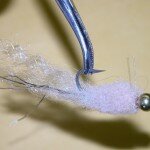
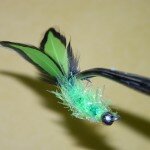
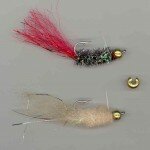
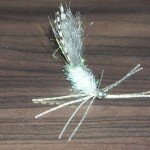
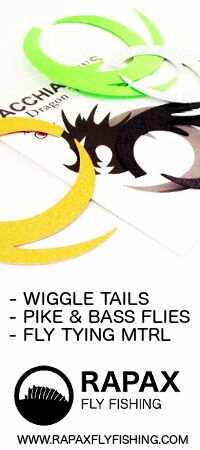
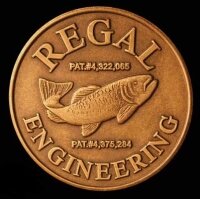
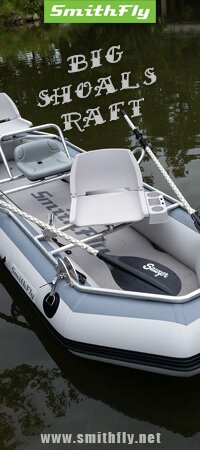






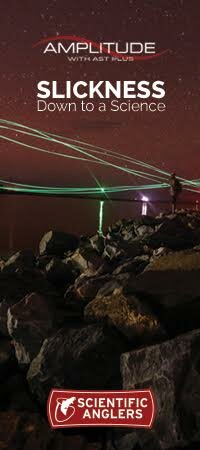
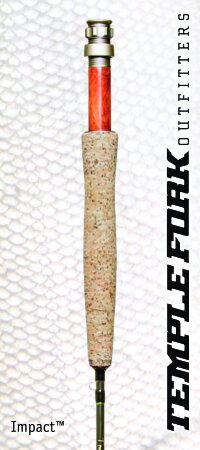

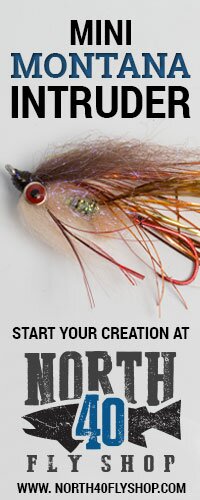
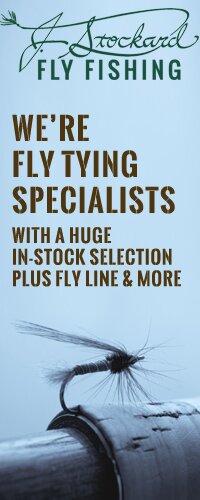


Love those bottom bouncing flies. Even though you focused them on saltwater they look like they would drive the warmwater fish here in Idaho crazy. Good job! Take care & …
Tight lines – (Gretchen &) Al Beatty
http://www.btsflyfishing.com
I’m glad to hear you think so Al. I bet they would too!
Thank you for the comment!
Al, they work great on bass and I’ve caught catfish as well. Don’t let the silver hook fool you; much of our “fresh”/warmwater fishing is done in brackish water. For dual purpose flies, I usually tie on a salt resistant hook.